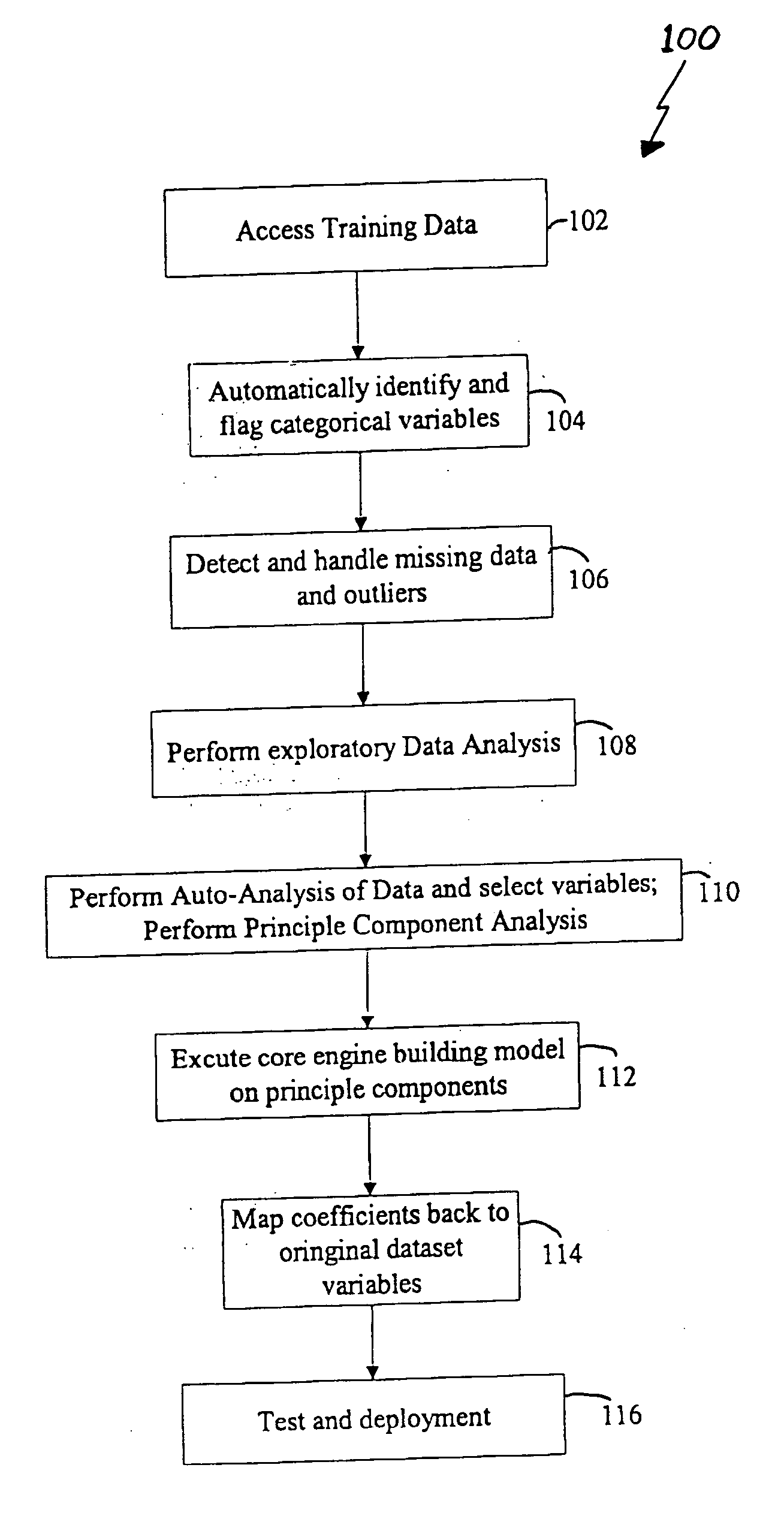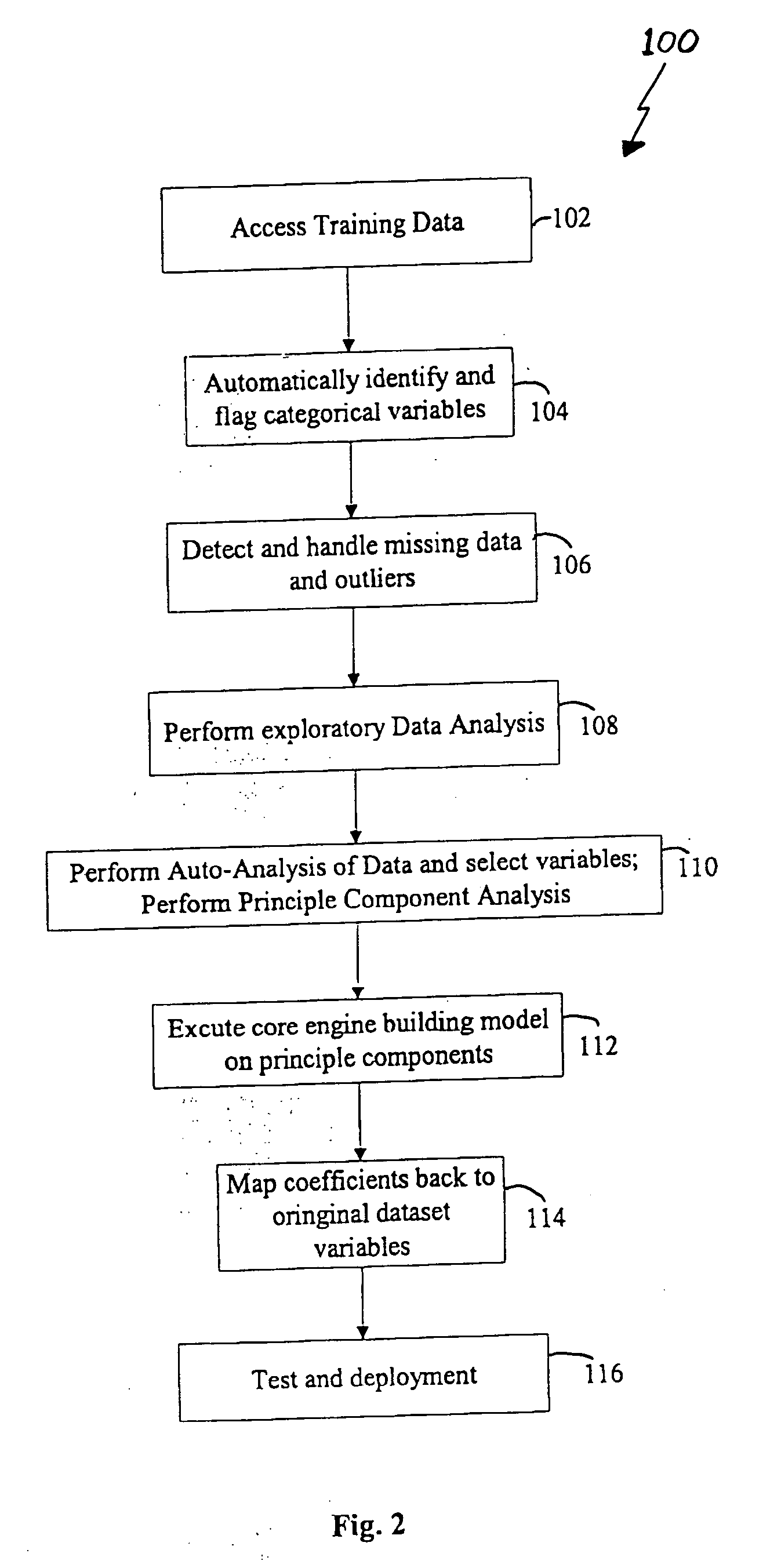Method and system for analyzing data and creating predictive models
a statistical model and data analysis technology, applied in the field of statistical data analysis, can solve the problems of inability to accurately predict the effect of the data model, the model building process is long and complex, and the solution typically requires either expensive payroll increases associated with hiring in-house experts or costly consulting engagements. , to achieve the effect of reducing the size of the design matrix and processing time for building the model, facilitating model interpretation and model deployment, and sufficient robust and accurate data models
- Summary
- Abstract
- Description
- Claims
- Application Information
AI Technical Summary
Benefits of technology
Problems solved by technology
Method used
Image
Examples
Embodiment Construction
[0039] The invention is described in detail below with reference to the figures wherein like elements are referenced with like numerals throughout.
[0040] As used herein, the term “data” or “data set” refers to information comprising a group of observations or records of one or more variables, parameters or predictors (collectively and interchangeably referred to herein as “variables”), wherein each variable has a plurality of entries or values. A “target variable” refers to a variable having a range or a plurality of possible outcomes, values or solutions for a given problem or query of interest. For example, as shown in FIG. 1, a data set 10 may include the following seven exemplary predictor variables: grades people received in their sixth grade math course (M); grades in sixth grade English (E); grades in sixth grade physical education (PE); grades in sixth grade history (H); grades in any elementary school art course (A); gender (G); and intelligence quotient (IQ). If informati...
PUM
 Login to View More
Login to View More Abstract
Description
Claims
Application Information
 Login to View More
Login to View More - R&D
- Intellectual Property
- Life Sciences
- Materials
- Tech Scout
- Unparalleled Data Quality
- Higher Quality Content
- 60% Fewer Hallucinations
Browse by: Latest US Patents, China's latest patents, Technical Efficacy Thesaurus, Application Domain, Technology Topic, Popular Technical Reports.
© 2025 PatSnap. All rights reserved.Legal|Privacy policy|Modern Slavery Act Transparency Statement|Sitemap|About US| Contact US: help@patsnap.com



